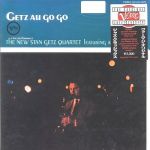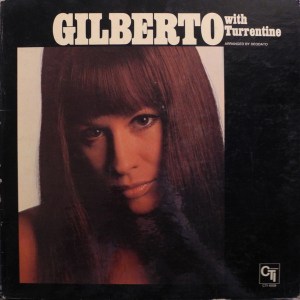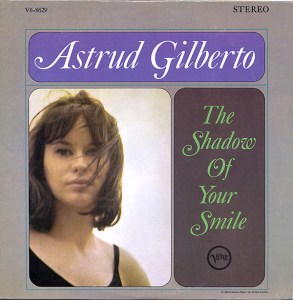More Stan Getz
More Bossa Nova
- Musically and sonically, this is a must own jazz album for audiophiles, perfect for those new to jazz as well as serious jazz aficionados
- This was a magical night (or two) with Stan feeling the spirit and staying telepathically in the groove with his compadres all evening long
- An incredibly tough album to find with the right sound and decent surfaces, which is the main reason it’s been about four years since we last did this shootout
- The top copy of Getz-Gilberto last time around sold for $1499 — if I had to choose between them, I would be tempted to take Getz Au Go Go, especially with sound like this
- 4 stars: “Highly recommended for all dimensions of jazz enthusiasts.” [We would, of course, give it the full 5 Stars]
This Stan Getz record has the kind of live jazz club sound that audiophiles like us (you and me) dream of.
More importantly, this ain’t no jazz at some stupid pawnshop — this is the real thing. Stan Getz, Gary Burton, Kenny Burrell and the lovely Astrud Gilberto, the living embodiment of cool jazz, are coming to a listening room near you.
Fans of cool jazz — in point of fact, some of the coolest jazz ever recorded — take note.
Cool Jazz Is Right
I’ve gotten more enjoyment out of this Getz album than any other, including those that are much more famous such as Getz/Gilberto (which doesn’t sound as good by the way). This one is (mostly) live in a nightclub and it immediately puts you in the right mood to hear this kind of jazz.
Listening to side one, I’m struck with the idea that this is the coolest jazz record of cool jazz ever recorded. Getz’s take on Summertime is a perfect example of his “feel” during these sessions. His playing is pure emotion; every note seems to come directly from his heart.
What really sets these performances apart is the relaxed quality of the playing. Getz seems to be almost nonchalant, but it’s not a bored or disinterested sound he’s making. It’s more of a man completely comfortable in this live setting, surrounded by like-minded musicians, all communicating the same vibe. Perhaps they all got hold of some really good grass that day. That’s the feeling one gets from their playing. As one is listening, there’s a certain euphoria that seems to be part of the music. This is definitely one of those albums to get lost in. (more…)









